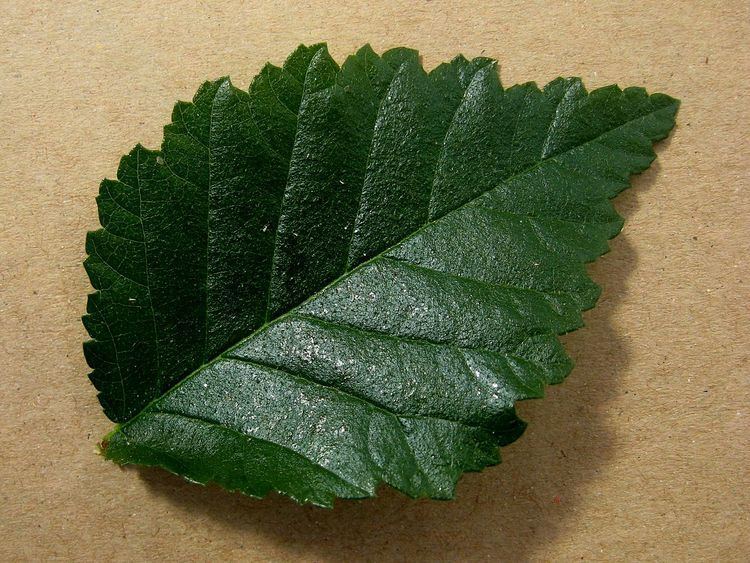Cultivar 'Ademuz' | Origin Spain | |
 | ||
People also search for Ulmus minor 'Dehesa de Amaniel' | ||
The Field Elm cultivar Ulmus minor 'Ademuz' was cloned by root cuttings from a tree growing in the eponymous town north-west of Valencia, Spain, by researchers at the Escuela Técnica Superior de Ingenieros de Montes, Universidad Politėcnica de Madrid in 1996. The tree is one of a number discovered to have a very high resistance to Dutch Elm Disease, on a par with, if not greater than, the hybrid cultivar 'Sapporo Autumn Gold'. In the Madrid study, the appearance of the tree was rated 4.5 / 5, the most attractive of the selected cultivars.
Contents
'Ademuz' was introduced to the UK in 2014, by Hampshire & Isle of Wight Branch, Butterfly Conservation, as part of an assessment of DED-resistant cultivars as potential hosts of the endangered White-letter Hairstreak.
Description
'Ademuz' is monopodial, and comparatively fast-growing at 100 cm per annum, the fastest of the U. minor clones under assessment at Puerta de Hierro, Madrid. The branches are devoid of corky tissue. The leaves, on 5 mm petioles, are ovate, typically oblique at the base and acuminate at the apex, the average length and width 54 × 34 mm, the margins doubly serrate. Foliar density relative to 'Sapporo Autumn Gold' is described as 'medium'.
Pests and diseases
In inoculation trials conducted in 2008, 'Ademuz' sustained approximately 10% damage (assumed to be wilting rather than die-back) against a score of c. 45% for the benchmark-resistant cultivar 'Sapporo Autumn Gold'. In 2009 'Ademuz' scored c. 18%, and Sapporo c. 21%. Ergo, 'Ademuz' would appear to have a level of resistance unprecedented in a European species. However in Italian elm trials, some Spanish U. minor clones have shewn more susceptibility to elm yellows, a phytoplasma not known to exist in the UK, than those of any other provenance. Whether 'Ademuz' shares this susceptibility is not yet known.[3]
Cultivation
The cultivar is (2016) undergoing further trials at other locations in Spain; if completed satisfactorily it will be released to commerce under licence. 'Ademuz' is also being assessed as part of Butterfly Conservation's elm trials in southern Hampshire, England.
Etymology
'Ademuz' (Valencian 'Ademus') is derived from the Arabic 'Ad-damus', which appears to mean 'impregnable', and the origin of the English word 'adamant'. [4]
